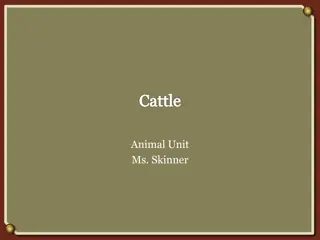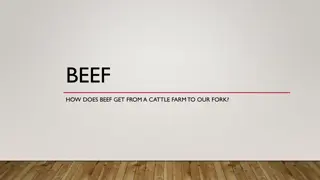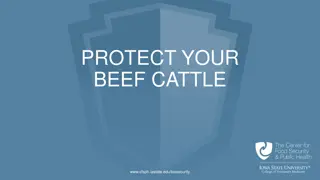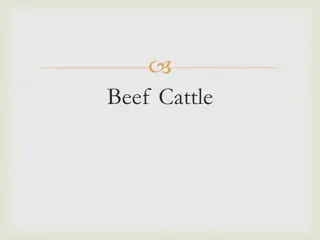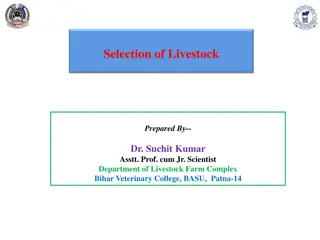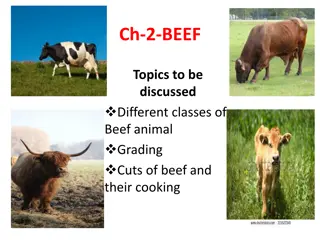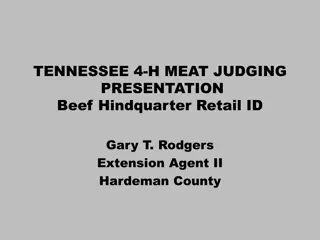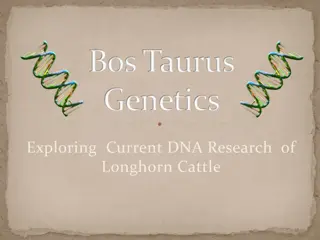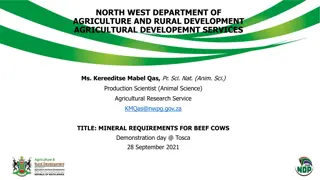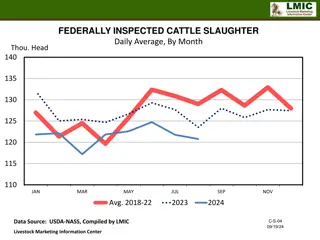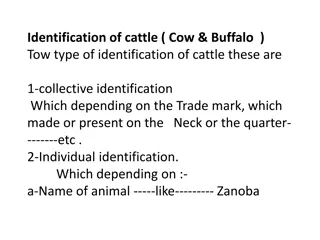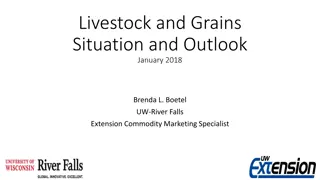Understanding Expected Progeny Differences (EPDs) in Beef Cattle Selection
Expected Progeny Differences (EPDs) in beef cattle breeding predict future offspring performance based on genetic merit. They help compare animals as parents and aid in selecting for traits like birth weight, weaning weight, and yearling weight. Combining EPDs with visual appraisal improves decision-making accuracy when choosing cattle for breeding purposes.
Download Presentation

Please find below an Image/Link to download the presentation.
The content on the website is provided AS IS for your information and personal use only. It may not be sold, licensed, or shared on other websites without obtaining consent from the author. Download presentation by click this link. If you encounter any issues during the download, it is possible that the publisher has removed the file from their server.
E N D
Presentation Transcript
What are EPDs? Expected Progeny Difference Predict differences in performance between future offspring of individuals of the same breed when each is mated to animals of the same average genetic merit The purpose is to compare the genetic merit of an animal as a parent
Traits used for EPD Birth weight (BW) Weaning weight (WW) Yearling weight (YW) Milking ability (MA) Total maternal traits Carcass cutability Carcass quality Gestation length Scrotal circumference Pelvic area (PA) *The traits in bold are the most commonly referenced traits with regard to beef cattle.*
Selecting Cattle with EPDs It is important to understand and use EPDs when they are provided. However, EPDs should be combined with visual appraisal to improve decision making accuracy.
Birth Weight (BW) Major contributing factor associated with calving difficulties The higher the BW, the greater chance of calving difficulty
Birth Weight Scenario If these bulls were to be mated to first calf heifers, which bull would you chose to breed to the heifers? Bull C He has the lowest BW; meaning his calves will average 5 pounds lighter than bull B s & 10 pounds lighter than bull A s Bull Birth Weight EPD A +5.0 B 0 C -5.0
Weaning(WW) & Yearling Weight (YW) Commonly referred to as growth data Important because cattle are sold by weight A positive growth rate means a profitable investment WW and YW have positive economic impact on selection
WW and YW Scenario Which bull is most desirable if offspring are sold at WW? Bull A His offspring average 6 lbs heavier than bull B Which is most desirable if they are marked as finished cattle? Bull A He has the highest YW Bull Weaning Weight EPD Yearling Weight EPD A +12.0 +23.0 B +6.0 +10.0 C -8.0 -4.0
Milking Ability (MA) Measuring the additional pounds of weaning weight from daughters due to genes for milking ability.
Milking Ability Scenario Bull Milking Ability EPD A +8.0 B -2.0 The difference in MA EPD is 10 lbs This does not mean daughters from bull A produce 10 lbs more milk, but that bull A daughters would wean calves that are on average 10 lbs heavier than bull B
Milking Ability Scenario Bull Milking Ability EPD A +8.0 B -2.0 Which bull has a more desirable MA EPD? It depends on the scenario. If higher milking ability is desired, bull A would be chosen. If the scenario says forage is low quality then bull B would be chosen because the daughters of bull A would need higher quality grasses to reach expected values.
Selection Scenario This is the situation or environment that cattle are going to be placed into upon completion of the selection process. ALWAYS READ THE SCENARIO OR SITUATION FIRST! It determines what traits to emphasize when evaluating the EPDs.
Example Statements The ranch labor is limited This means no one is there to pull calves, so you should select a low birth weight. All offspring are sold at weaning. This indicates that the weaning weight should be emphasized heavily The producer is retaining ownership through the feedlot. This indicates that the producer won t sell the calves until they are fed in the feedlot and go to harvest. Yearling weight is the most important.
Other Important Information Each beef breed has different breed averages for all EPDs. EPDs should prepare you to understand genetic performance profiles.
References http://www.cals.ncsu.edu/an_sci/extension/animal/4hyouth/Liv estock%20Judging/usingepd.html



